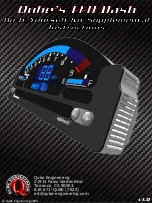
XJ128 and XJ128 Plus Printhead
XJ128 Guide to Operation
Xaar Document no: D031010302 Version A
Page 31
6.2 Data structure
6.2.1 Configuration data structure
All XJ128 printhead models are configured and ready to operate following the power-on sequence.
No external printhead configuration is required.
6.2.2 Cycle order
Due to the
“
shared wall
”
design it is not possible to eject nozzles from adjacent channels at the same
time. To overcome this, all the nozzles are divided/grouped into three
“
droplet ejection
”
groups,
called cycles, as shown in the table 6.8.
Group Name
Driving Group
A Cycle
Nozzles in the range [(1+n*3)
…
126]
B Cycle
Nozzles in the range [(2+n*3)
…
127]
C Cycle
Nozzles in the range [(3+n*3)
…
128]
Table 6.8 - Nozzle grouping into cycles
The first firing nozzle is an
‘
A
’
cycle. The last firing nozzle is a
‘
B
’
cycle. If t
he printhead is used bi-
directionally, the order of firing is reversed for the return pass i.e. C-B-A by use of a
‘
phase order
’
signal, PHO, on the user interface.
The cycle order sequence is controlled by the user application through the interface connector. The
A-B-C cycle order is called the
”
Normal cycle order
”
and the C
-B-A cycle order is called the
”
Reversed cycle order
”
.
Figure 6.3
–
Cycle order when changing the cycle direction using
‘
PHO
’
With the PHO signal set at low level (inactive), the
“
Normal cycle order
”
is used, which means that
the printing order of the groups is A-B-C. When the PHO signal is set at a high level (active), the
“
Reversed cycle order
”
is used, which means that the
used printing order of the groups is C-B-A.
Start
“
Normal
”
print direction
A
C
B
Reset
Order
“
Reversed
”
print direction
C
A
B
Reset
Order
Start
















































